Abstract
Serum from normal mice contains an inhibitor of interleukin-2 (IL-2) which probably interacts directly with IL-2. Athymic mice and normal mice kept under specific pathogen-free conditions do not show this activity, whereas mice infected with malaria parasites have increased serum levels of inhibitor. This IL-2 inhibitor may play an important part in regulating T-cell function.
Full text
PDF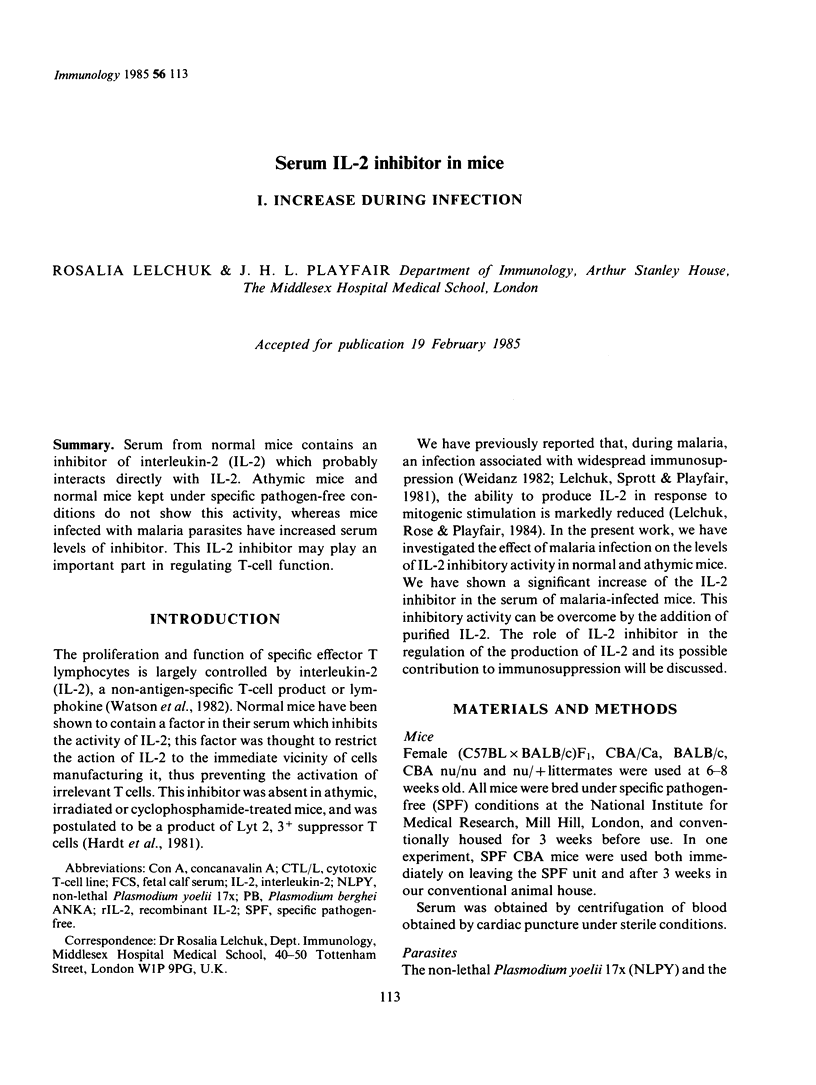
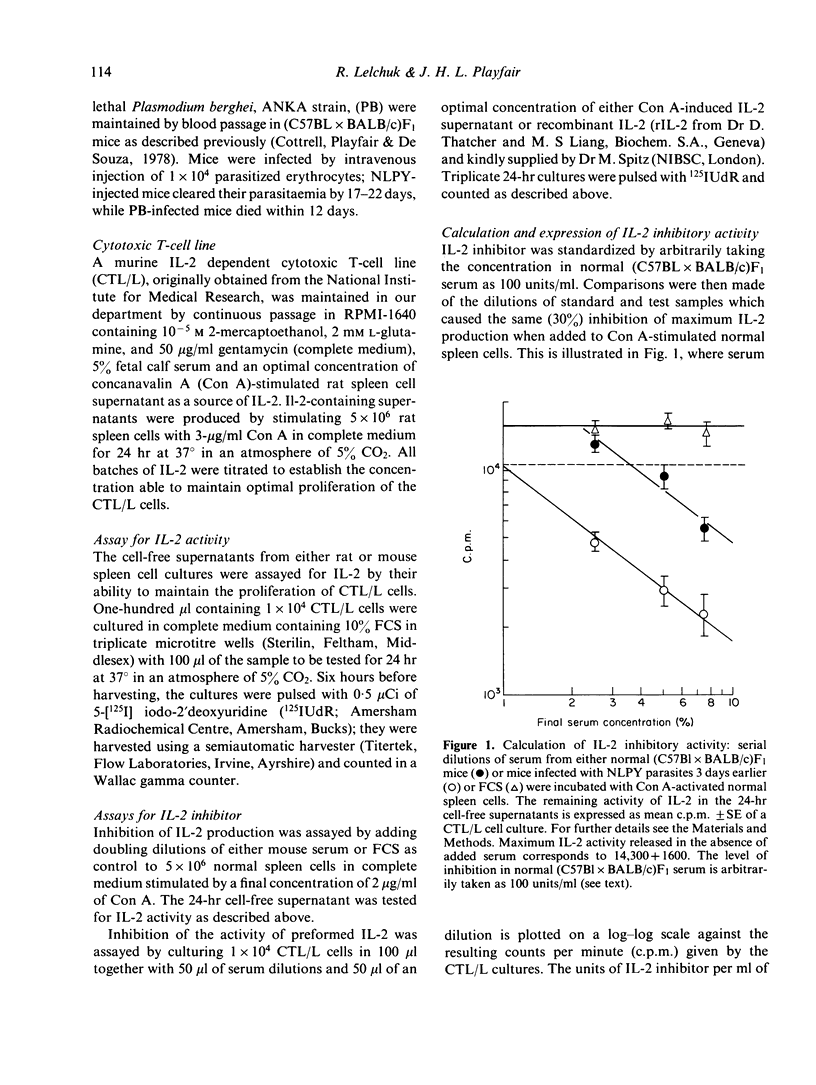
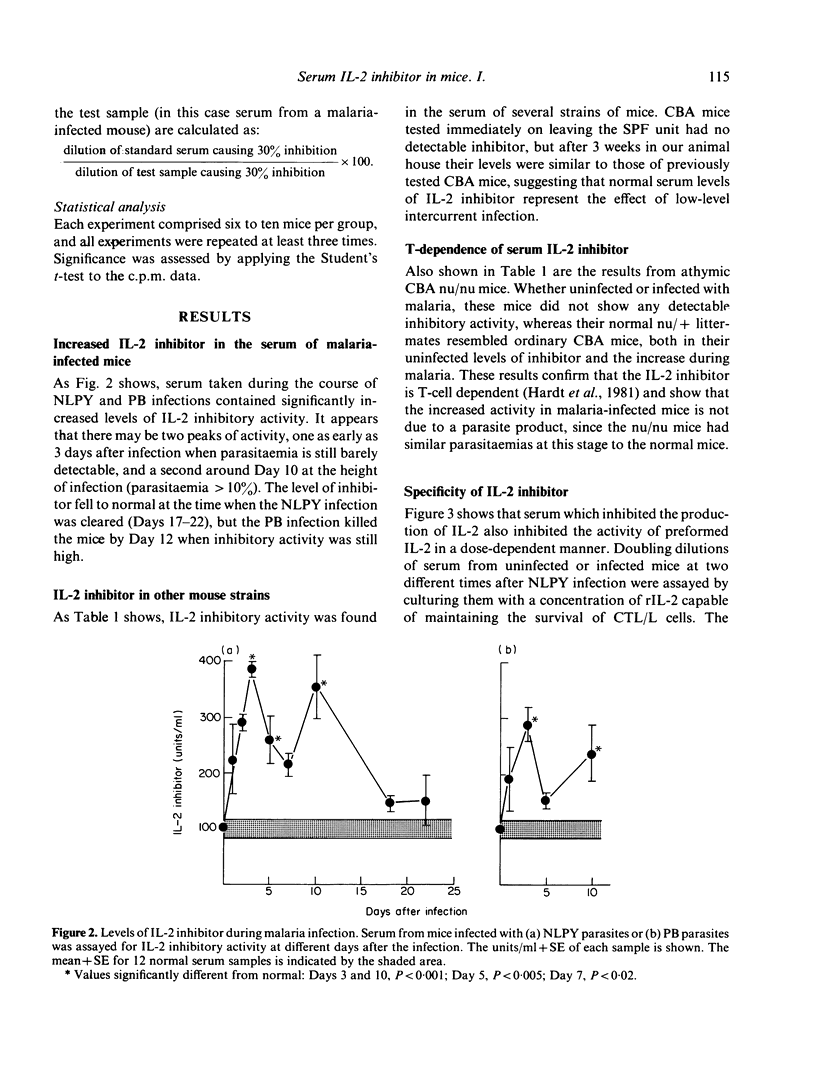
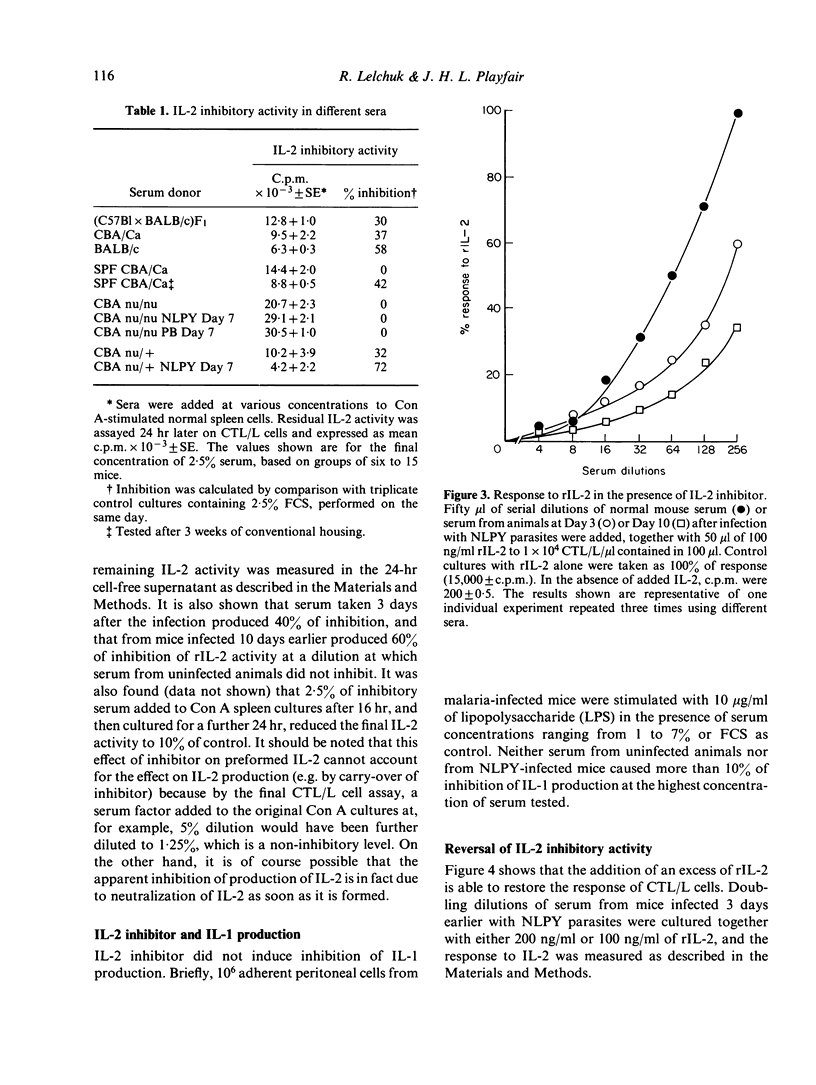
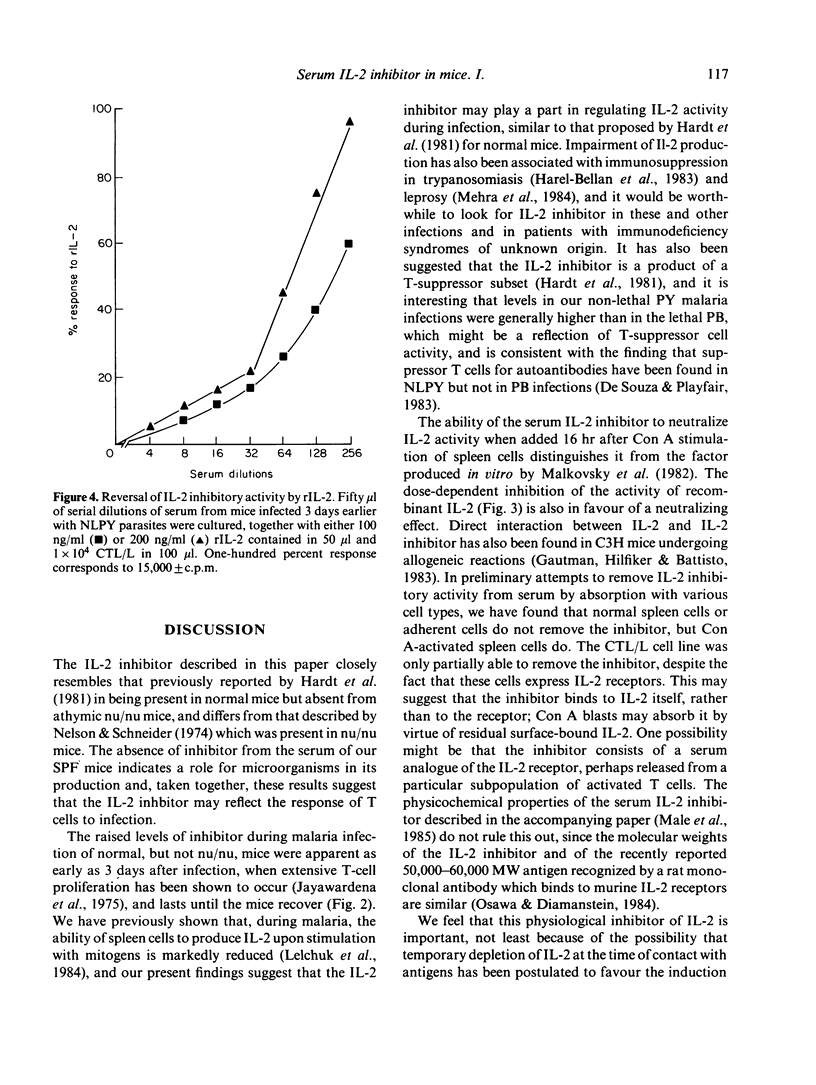
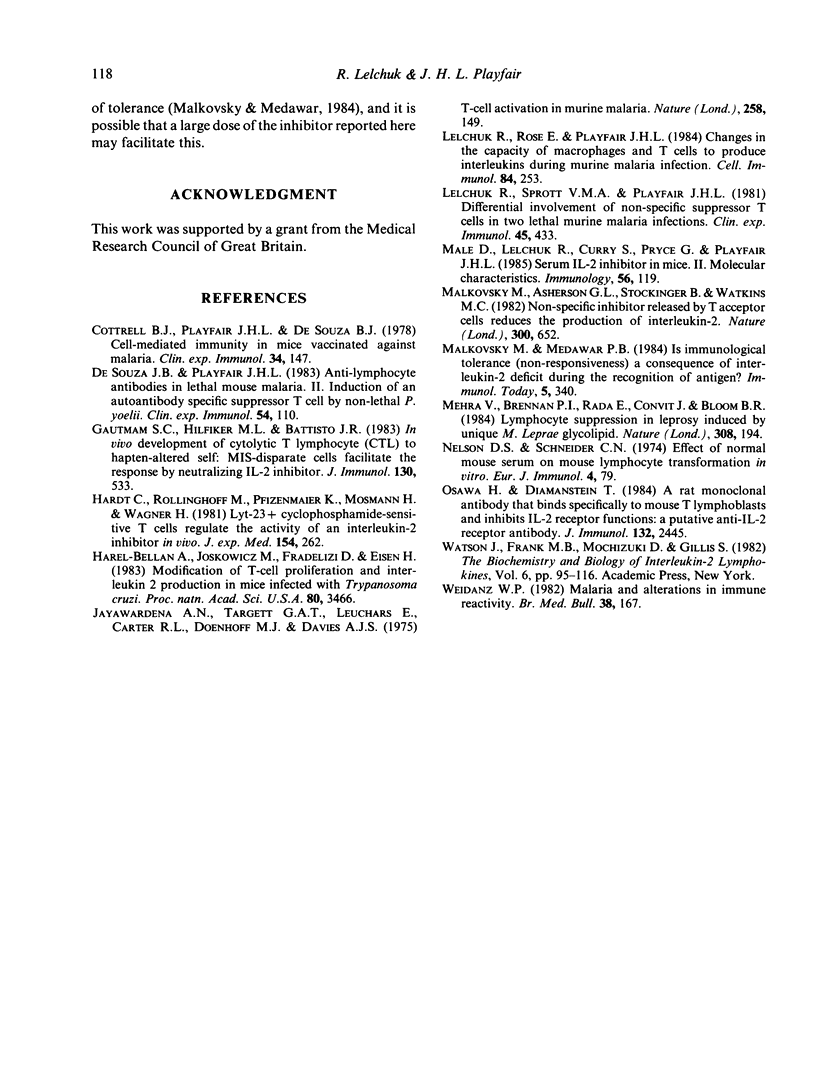
Selected References
These references are in PubMed. This may not be the complete list of references from this article.
- Cottrell B. J., Playfair J. H., De Souza B. J. Cell-mediated immunity in mice vaccinated against malaria. Clin Exp Immunol. 1978 Nov;34(2):147–158. [PMC free article] [PubMed] [Google Scholar]
- Gautam S. C., Hilfiker M. L., Battisto J. R. In vivo development of cytolytic T lymphocytes (CTL) to hapten-altered self: MIs-disparate cells facilitate the response by neutralizing IL 2 inhibitor. J Immunol. 1983 Feb;130(2):533–537. [PubMed] [Google Scholar]
- Hardt C., Röllinghoff M., Pfizenmaier K., Mosmann H., Wagner H. Lyt-23+ cyclophosphamide-sensitive T cells regulate the activity of an interleukin 2 inhibitor in vivo. J Exp Med. 1981 Aug 1;154(2):262–274. doi: 10.1084/jem.154.2.262. [DOI] [PMC free article] [PubMed] [Google Scholar]
- Harel-Bellan A., Joskowicz M., Fradelizi D., Eisen H. Modification of T-cell proliferation and interleukin 2 production in mice infected with Trypanosoma cruzi. Proc Natl Acad Sci U S A. 1983 Jun;80(11):3466–3469. doi: 10.1073/pnas.80.11.3466. [DOI] [PMC free article] [PubMed] [Google Scholar]
- Jayawardena A. N., Targett G. A., Leuchars E., Carter R. L., Doenhoff M. J., Davies A. J. T-cell activation in murine malaria. Nature. 1975 Nov 13;258(5531):149–151. doi: 10.1038/258149a0. [DOI] [PubMed] [Google Scholar]
- Lelchuk R., Rose G., Playfair J. H. Changes in the capacity of macrophages and T cells to produce interleukins during murine malaria infection. Cell Immunol. 1984 Apr 1;84(2):253–263. doi: 10.1016/0008-8749(84)90097-2. [DOI] [PubMed] [Google Scholar]
- Lelchuk R., Sprott V. M., Playfair J. H. Differential involvement of non-specific suppressor T cells in two lethal murine malaria infections. Clin Exp Immunol. 1981 Aug;45(2):433–438. [PMC free article] [PubMed] [Google Scholar]
- Male D., Lelchuk R., Curry S., Pryce G., Playfair J. H. Serum IL-2 inhibitor in mice. II. Molecular characteristics. Immunology. 1985 Sep;56(1):119–125. [PMC free article] [PubMed] [Google Scholar]
- Malkovsky M., Asherson G. L., Stockinger B., Watkins M. C. Nonspecific inhibitor released by T acceptor cells reduces the production of interleukin-2. Nature. 1982 Dec 16;300(5893):652–655. doi: 10.1038/300652a0. [DOI] [PubMed] [Google Scholar]
- Mehra V., Brennan P. J., Rada E., Convit J., Bloom B. R. Lymphocyte suppression in leprosy induced by unique M. leprae glycolipid. Nature. 1984 Mar 8;308(5955):194–196. doi: 10.1038/308194a0. [DOI] [PubMed] [Google Scholar]
- Nelson D. S., Shneider C. N. Effect of normal mouse serum on mouse lymphocyte transformation in vitro. Eur J Immunol. 1974 Feb;4(2):79–86. doi: 10.1002/eji.1830040205. [DOI] [PubMed] [Google Scholar]
- Osawa H., Diamantstein T. A rat monoclonal antibody that binds specifically to mouse T lymphoblasts and inhibits IL 2 receptor functions: a putative anti-IL 2 receptor antibody. J Immunol. 1984 May;132(5):2445–2450. [PubMed] [Google Scholar]
- Weidanz W. P. Malaria and alterations in immune reactivity. Br Med Bull. 1982 May;38(2):167–172. doi: 10.1093/oxfordjournals.bmb.a071754. [DOI] [PubMed] [Google Scholar]
- de Souza J. B., Playfair J. H. Anti-lymphocyte antibodies in lethal mouse malaria. II. Induction of an autoantibody specific suppressor T cell by non-lethal P. yoelii. Clin Exp Immunol. 1983 Oct;54(1):110–116. [PMC free article] [PubMed] [Google Scholar]


